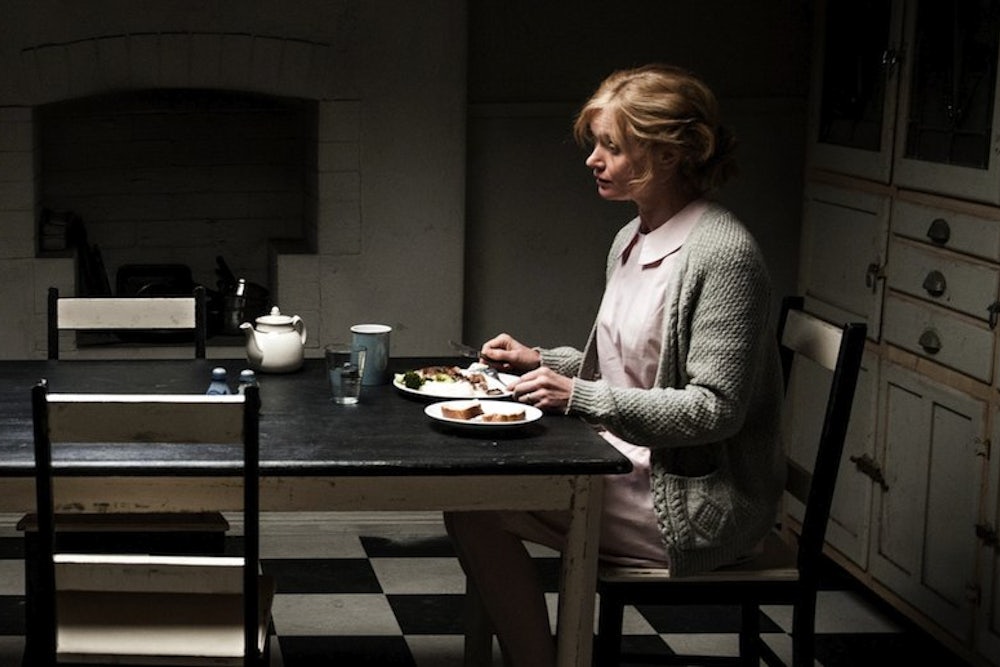Movie-goers spooked by the acclaimed horror film The Babadook are in good company: William Friedkin, director of The Exorcist, has called the Australian film the most terrifying movie he’s ever seen. “It will scare the hell out of you,” he warned his Twitter followers.
That doesn’t sound like an enjoyable experience—and for many of us, it’s not. In recent years, horror films have caused audience members to vomit and faint. Psychologists have shown that viewing horror movies induces physiological changes consistent with a “fight-or-flight” response. In 2003, scientists found that healthy men and women had a significantly higher heart rate and a higher concentration of stress hormones like cortisol in their blood if they watched The Texas Chainsaw Massacre than if they sat in a quiet room. For some, horror movies can even be fatal. A woman in Kansas died of a heart attack during the crucifixion scene in The Passion of the Christ. For a Taiwanese man with high blood pressure, Avatar was the last straw.
Clearly, horror movies are not for everyone. But what does it say about you if you love violent or scary films?
You’re more likely to:
Lack empathy
In a 2000 paper in the journal Media Psychology, a team of researchers led by Richard Jackson Harris and Steven Hoekstra administered personality tests to 233 undergraduates—125 men and 108 women—and asked them to reflect on a memory of watching a horror movie on a date. (Everyone in this study had been on at least one horror-movie date; the most common movies were Scream and Scream 2, followed by I Know What You Did Last Summer and its sequel.) Students who scored higher on measures of empathy—agreeing more strongly with statements like, “I am often quite touched by things I see happen” and “I really get involved with the feelings of a character in a novel”—were more likely to report negative responses like sleep disturbances and feelings of distress.
Be aggressive and thrill-seeking
In 1998, psychologists Anton Aluja-Fabregat and Rafael Torrubia-Beltri showed 470 eighth-grade children in Catalonia minute-long clips of violent cartoons. After each scene, the students had to indicate, on a scale of 1 to 10, whether they found the scene funny, thrilling, or violent. They also asked the children’s teachers to evaluate their students’ personality traits—and found that children who thought the violent scenes were thrilling or funny were likely to be perceived as more aggressive and excitable by their teachers. They also tended to score higher on measures of sensation-seeking impulses.
This wasn’t the first study to give horror-movie junkies something to worry about. In 1985, psychologists Marvin Zuckerman and Patrick Litle asked over 300 undergraduates about their movie preferences and looked for correlations with other personality traits. The students who sought out horror movies were more likely than others to say they would like to watch an autopsy being performed, would attend gladiator fights if they could travel back in time, and would slow down to watch a car accident.
Be a man
Consistent with the stereotype, men seem to experience—or at least admit to experiencing—fewer negative emotional side effects of horror films. In Harris and Hoekstra’s study, less than 2 percent of the men—but 10 percent of the women—reported sleeping with the lights on afterwards. Men also seemed to have a higher tolerance for the movies: 31 percent of the females, but only 7 percent of the males, admitted that they “looked away a lot or left the room and returned.” 35 percent of men, and 56 percent of women, recalled experiencing “general fear/anxiety” afterward. This research is nearly 15 years old, though: women may be catching up to men in horror film attendance.
Be a man accompanied by a frightened woman
In an experiment in the 1980s, a team of psychologists led by Dolf Zillmann had 36 male and 36 female undergraduates watch a horror movie in opposite-sex pairs; each viewer had to evaluate their companion’s desirability before and after the movie, and answer questions about their experience of the film. Men were most likely to enjoy the movie when paired with a woman who was distressed by it, and least likely to enjoy if the woman was unperturbed. It didn’t make the woman more attractive, though: both men and women judged their companions as less desirable as “working mates” if they showed distress.
